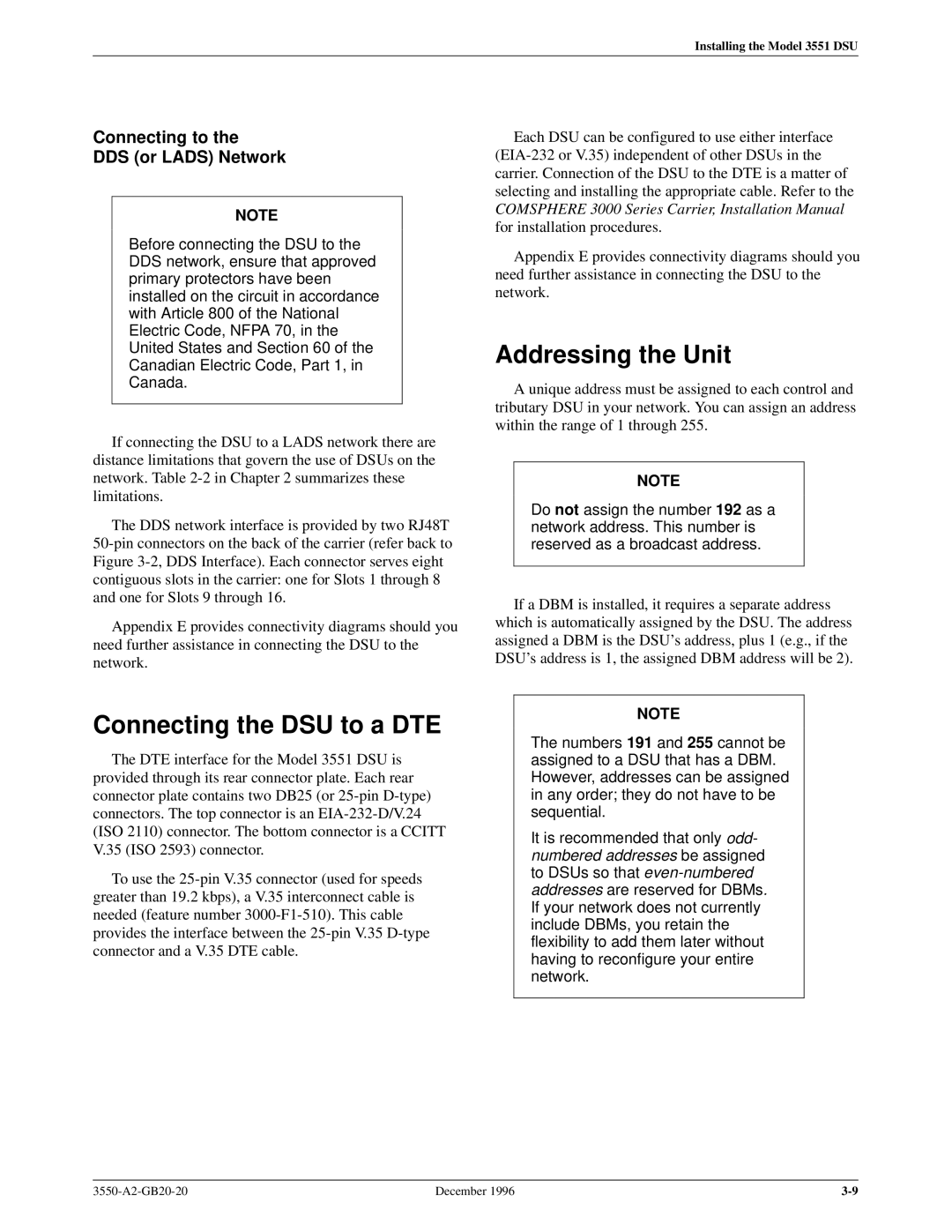
Installing the Model 3551 DSU
Connecting to the
DDS (or LADS) Network
NOTE
Before connecting the DSU to the DDS network, ensure that approved primary protectors have been installed on the circuit in accordance with Article 800 of the National Electric Code, NFPA 70, in the United States and Section 60 of the Canadian Electric Code, Part 1, in Canada.
If connecting the DSU to a LADS network there are distance limitations that govern the use of DSUs on the network. Table
The DDS network interface is provided by two RJ48T
Appendix E provides connectivity diagrams should you need further assistance in connecting the DSU to the network.
Connecting the DSU to a DTE
The DTE interface for the Model 3551 DSU is provided through its rear connector plate. Each rear connector plate contains two DB25 (or
To use the
Each DSU can be configured to use either interface
Appendix E provides connectivity diagrams should you need further assistance in connecting the DSU to the network.
Addressing the Unit
A unique address must be assigned to each control and tributary DSU in your network. You can assign an address within the range of 1 through 255.
NOTE
Do not assign the number 192 as a network address. This number is reserved as a broadcast address.
If a DBM is installed, it requires a separate address which is automatically assigned by the DSU. The address assigned a DBM is the DSU's address, plus 1 (e.g., if the DSU's address is 1, the assigned DBM address will be 2).
NOTE
The numbers 191 and 255 cannot be assigned to a DSU that has a DBM. However, addresses can be assigned in any order; they do not have to be sequential.
It is recommended that only odd- numbered addresses be assigned to DSUs so that
December 1996 |
